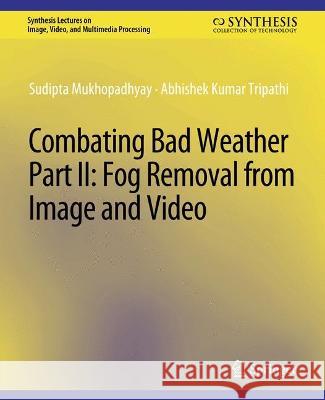Combating Bad Weather Part II: Fog Removal from Image and Video » książka
Combating Bad Weather Part II: Fog Removal from Image and Video
ISBN-13: 9783031011245 / Angielski / Miękka / 2015 / 70 str.
Every year lives and properties are lost in road accidents. About one-fourth of these accidents are due to low vision in foggy weather. At present, there is no algorithm that is specifically designed for the removal of fog from videos. Application of a single-image fog removal algorithm over each video frame is a time-consuming and costly affair. It is demonstrated that with the intelligent use of temporal redundancy, fog removal algorithms designed for a single image can be extended to the real-time video application. Results confirm that the presented framework used for the extension of the fog removal algorithms for images to videos can reduce the complexity to a great extent with no loss of perceptual quality. This paves the way for the real-life application of the video fog removal algorithm. In order to remove fog, an efficient fog removal algorithm using anisotropic diffusion is developed. The presented fog removal algorithm uses new dark channel assumption and anisotropic diffusion for the initialization and refinement of the airlight map, respectively. Use of anisotropic diffusion helps to estimate the better airlight map estimation. The said fog removal algorithm requires a single image captured by uncalibrated camera system. The anisotropic diffusion-based fog removal algorithm can be applied in both RGB and HSI color space. This book shows that the use of HSI color space reduces the complexity further. The said fog removal algorithm requires pre- and post-processing steps for the better restoration of the foggy image. These pre- and post-processing steps have either data-driven or constant parameters that avoid the user intervention. Presented fog removal algorithm is independent of the intensity of the fog, thus even in the case of the heavy fog presented algorithm performs well. Qualitative and quantitative results confirm that the presented fog removal algorithm outperformed previous algorithms in terms of perceptual quality, color fidelity and execution time. The work presented in this book can find wide application in entertainment industries, transportation, tracking and consumer electronics.











